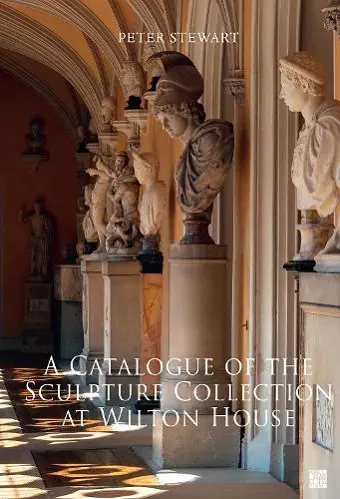A Catalogue of the Sculpture Collection at Wilton House
Format:Hardback
Publisher:Archaeopress
Published:1st Oct '20
Should be back in stock very soon

The Wilton House sculptures constituted one of the largest and most celebrated collections of ancient art in Europe. Originally comprising some 340 works, the collection was formed around the late 1710s and 1720s by Thomas Herbert, the eccentric 8th Earl of Pembroke, who stubbornly ‘re-baptized’ his busts and statues with names of his own choosing. His sources included the famous collection of Cardinal Mazarin, assembled in Paris in the 1640s and 1650s, and recent discoveries on the Via Appia outside Rome. Earl Thomas regarded the sculptures as ancient – some of them among the oldest works of art in existence – but in fact much of the collection is modern and represents the neglected talents of sixteenth-and seventeenth-century artists, restorers and copyists who were inspired by Greek and Roman sculpture.
About half of the original collection remains intact today, adorning the Gothic Cloisters that were built for it two centuries ago. After a long decline, accelerated by the impact of the Second World War, the sculptures have been rehabilitated in recent years. They include masterpieces of Roman and early modern art, which cast fresh light on Graeco-Roman antiquity, the classical tradition, and the history of collecting.
Illustrated with specially commissioned photographs, this catalogue offers the first comprehensive publication of the 8th Earl’s collection, including an inventory of works dispersed from Wilton. It re-presents his personal vision of the collection recorded in contemporary manuscripts. At the same time, it dismantles some of the myths about it which originated with the earl himself, and provides an authoritative archaeological and art-historical analysis of the artefacts.
'This volume on the marbles at Wilton House forms an impressive addition to the literature on the privately owned collections of antiquities in Britain.' – Clare Hornsby, Journal of the History of Collections (2021)
'This impressive book is the first comprehensive publication of the sculptures assembled in the early eighteenth century at Wilton House near Salisbury in Wiltshire by Thomas Herbert (1656–1733), eighth Earl of Pembroke... This book is a must for anyone interested in classical art and its subsequent artistic history, interpretation, and reception.' – Mark Merrony, Antiqvvs, Issue 9, Winter 2021/22
'Attentive readers will glean that a number of pieces sold off in the last century have returned to Wilton, a poignant demonstration of the current generation’s devotion to preserving the family’s important classical legacy. Stewart, too, advances this effort; his up-to-date, informative catalogue admirably succeeds in introducing the 150 or so sculptures on view at Wilton today to a scholarly audience. His work clears away the many cobwebs that have entangled the reception of Wilton’s antiquities and lays a solid foundation for future investigations.' – Elizabeth Bartman (2022): American Journal of Archaeology
‘P. Stewart does not fail to capture the personality of Pembroke, to evoke its eccentricity – which has earned a number of works preposterous identifications – but also its culture, which was also reflected in an impressive collection old books and medals, successively sold between 1828 and 1920. What was undoubtedly the largest collection of antiques in the kingdom and a real tourist attraction of which the guides of the 18th century keep the memory had almost sunk into oblivion and it is all the credit of William, 18th Earl of Pembroke and 15th Earl of Montgomery, and the Wilton Trustees for restoring it to some luster by truly resuscitating it, at the price of redemptions in public sales where reappeared certain works and research in the various dependencies of the area where a few items had gone astray in conservation conditions often deplorable, to have carried out certain restorations and decided to entrust P. Stewart the task of producing this catalog, which he has done all the more exemplary that the difficulties were numerous.
…this large volume is very well edited (beautiful matte paper, sturdy hardback and illustrated dust jacket) by Archaeopress Publishing Ltd.’ – translation ofJean-Charles Balty (2022): L’Antiquité Classique 90
ISBN: 9781789696554
Dimensions: unknown
Weight: 3178g
438 pages